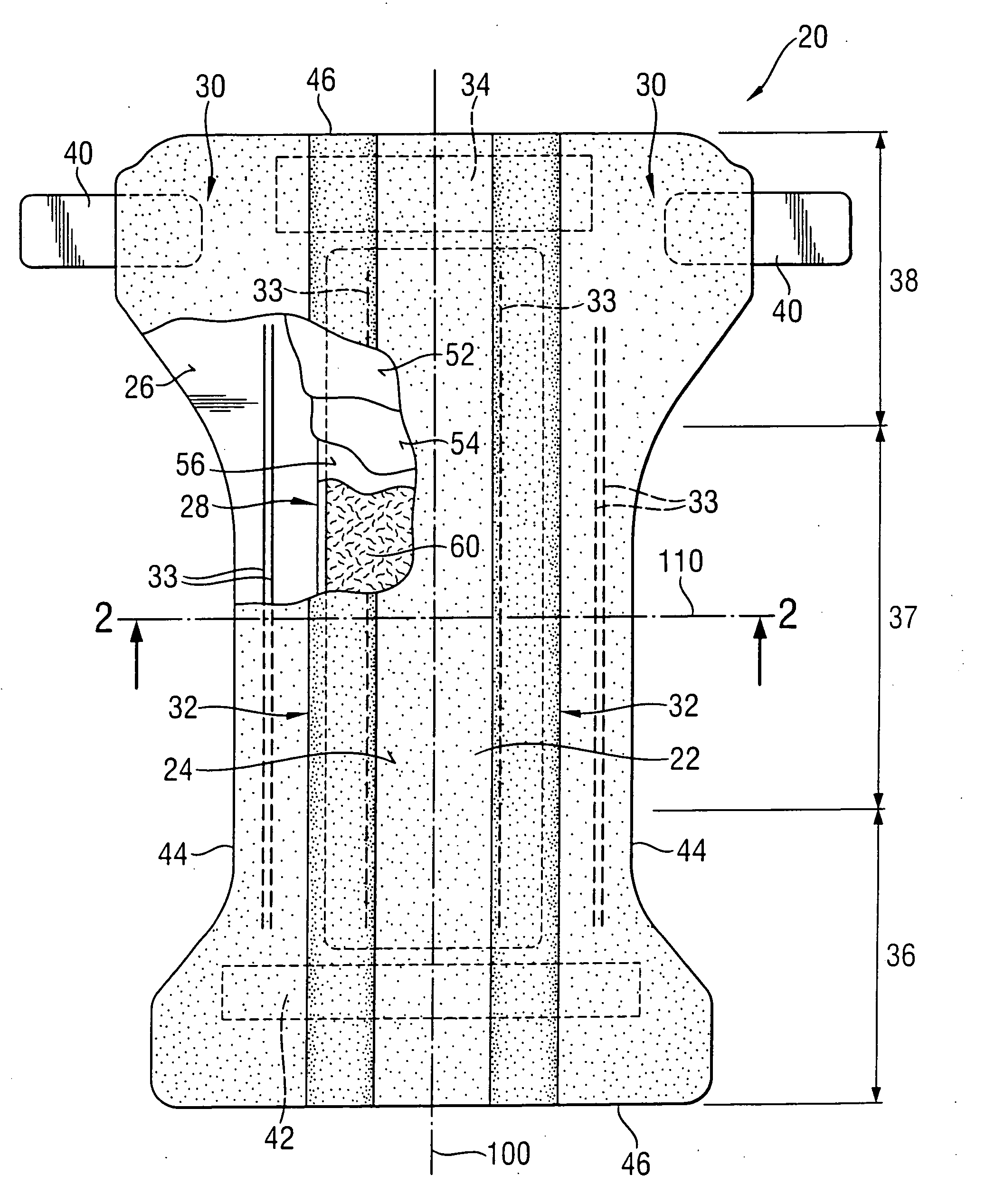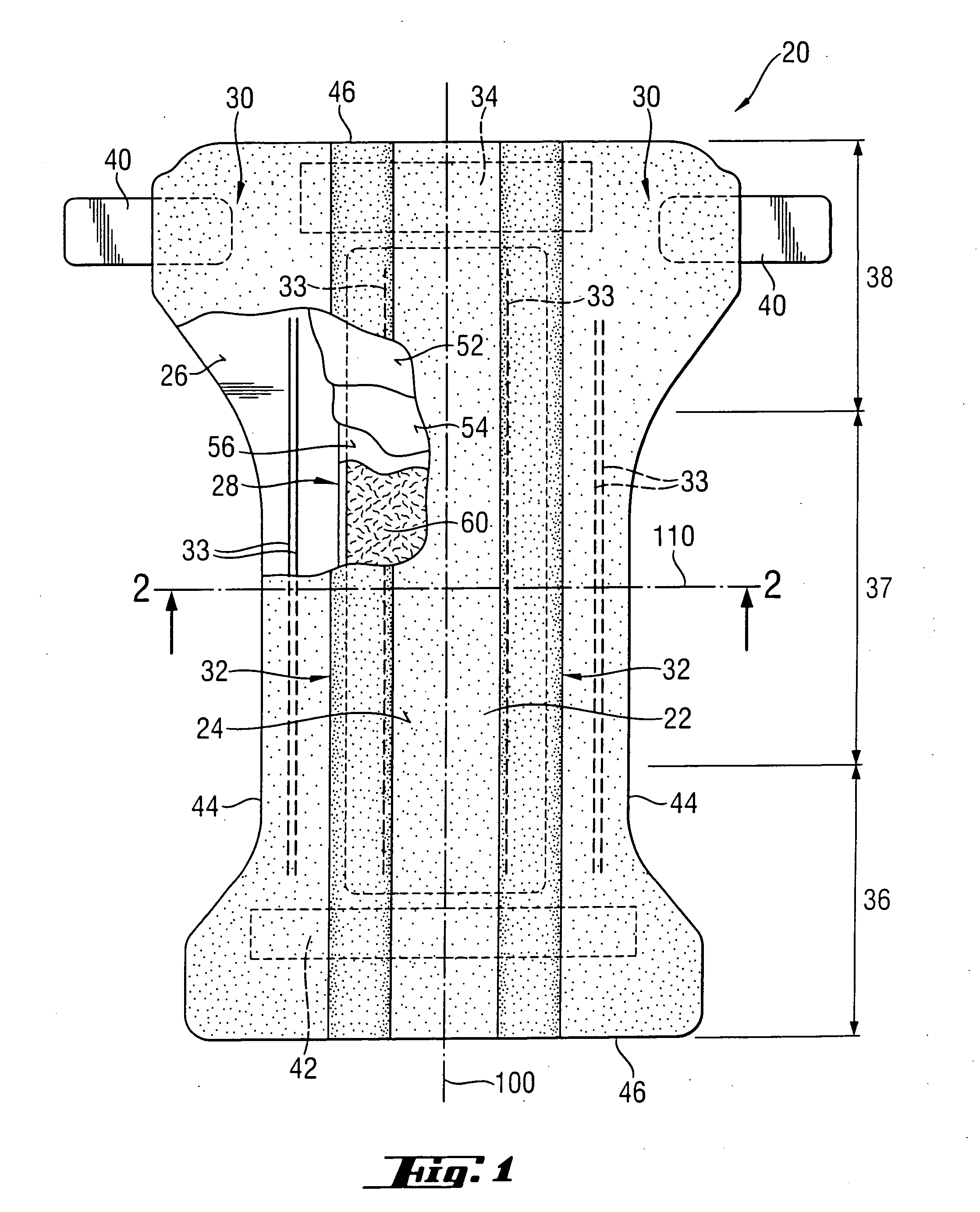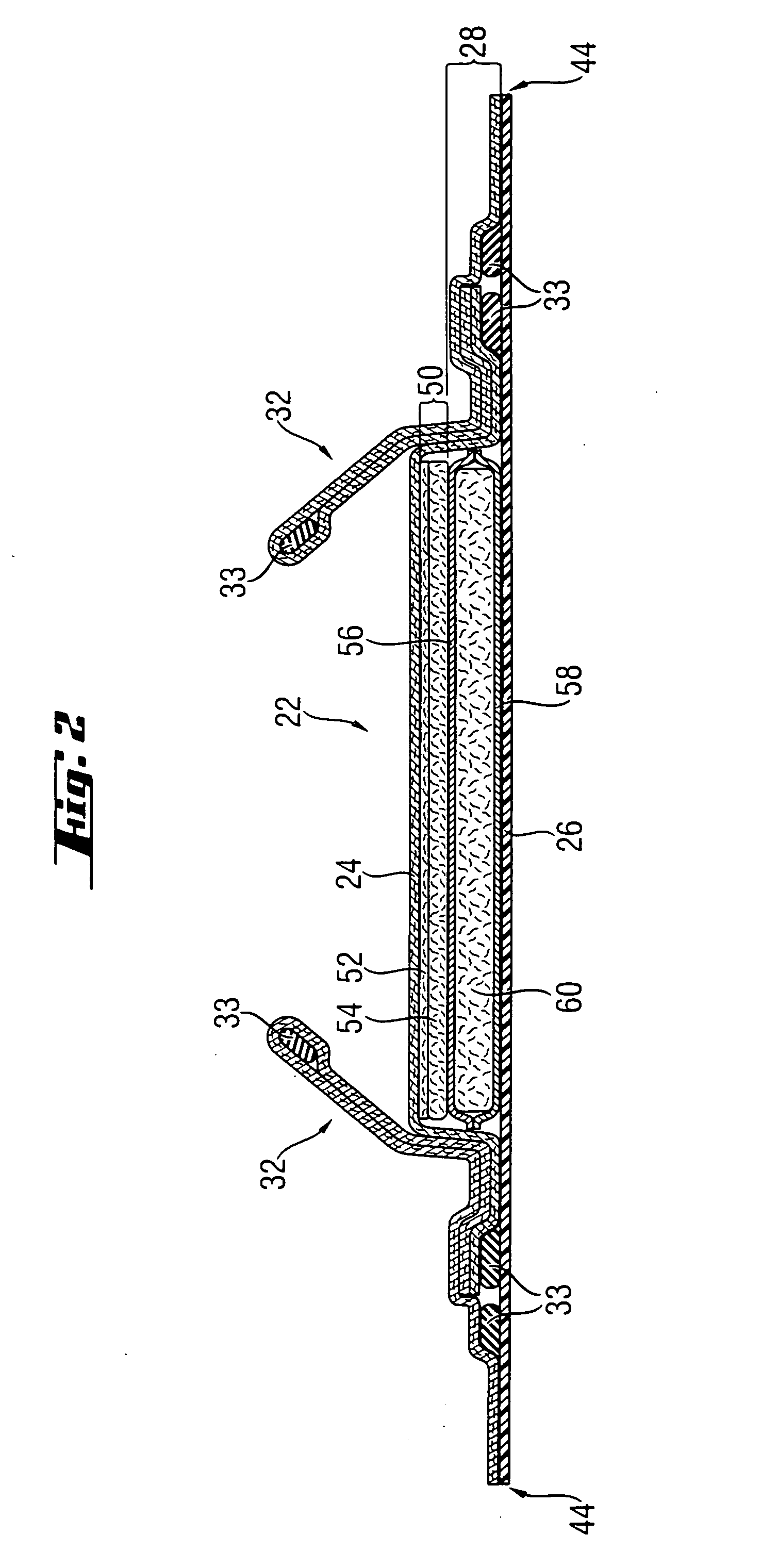Hydrophilic nonwovens with low retention capacity comprising cross-linked hydrophilic polymers
a hydrophilic polymer and nonwoven technology, applied in the direction of tampons, fibre treatment, bandages, etc., can solve the problems of increased urine leakage in the diaper, low coating durability, and performance reduction during diaper us
- Summary
- Abstract
- Description
- Claims
- Application Information
AI Technical Summary
Benefits of technology
Problems solved by technology
Method used
Image
Examples
Embodiment Construction
Definitions
[0021] As used herein, the following terms have the following meanings:
[0022]“Absorbent article” refers to devices that absorb and contain liquid. In one embodiment, the term “absorbent article” refers to devices that are placed against or in proximity to the body of the wearer to absorb and contain the various exudates discharged from the body. Absorbent articles include but are not limited to diapers, adult incontinent briefs, training pants, diaper holders and liners, sanitary napkins and the like. Additionally, in another embodiment according to the present invention the term “absorbent articles” refers to wipes.
[0023]“Disposable” is used herein to describe articles that are generally not intended to be laundered or otherwise restored or reused i.e., they are intended to be discarded after a single use and, preferably, to be recycled, composted or otherwise disposed of in an environmentally compatible manner.
[0024]“Comprise,”“comprising,” and “comprises” is an op...
PUM
| Property | Measurement | Unit |
|---|---|---|
| through time | aaaaa | aaaaa |
| surface tension | aaaaa | aaaaa |
| contact angle | aaaaa | aaaaa |
Abstract
Description
Claims
Application Information
 Login to View More
Login to View More - R&D
- Intellectual Property
- Life Sciences
- Materials
- Tech Scout
- Unparalleled Data Quality
- Higher Quality Content
- 60% Fewer Hallucinations
Browse by: Latest US Patents, China's latest patents, Technical Efficacy Thesaurus, Application Domain, Technology Topic, Popular Technical Reports.
© 2025 PatSnap. All rights reserved.Legal|Privacy policy|Modern Slavery Act Transparency Statement|Sitemap|About US| Contact US: help@patsnap.com



